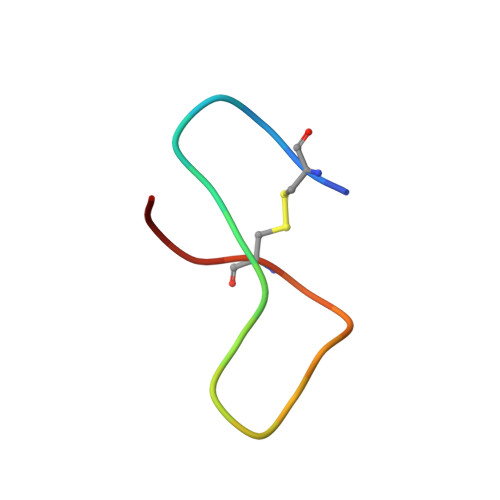The structure of a 19-residue fragment from the C-loop of the fourth epidermal growth factor-like domain of thrombomodulin.
Adler, M., Seto, M.H., Nitecki, D.E., Lin, J.H., Light, D.R., Morser, J.(1995) J Biol Chem 270: 23366-23372
- PubMed: 7559494
- DOI: https://doi.org/10.1074/jbc.270.40.23366
- Primary Citation of Related Structures:
1TMR - PubMed Abstract:
The solution structure has been determined for a 19-residue peptide that is fully folded at room temperature. The sequence of this peptide is based on the C-loop, residues 371-389, of the fourth epidermal growth factor-like domain of thrombomodulin, a protein that acts as a cofactor for the thrombin activation of protein C. Despite its small size, the peptide forms a compact structure with almost no repeating secondary structure. The results indicate the structure is held together by hydrophobic interactions, which in turn stabilize the two beta-turns in the structure. The first beta-turn in the C-loop represents a conserved motif that is found in the published structures of five other epidermal growth factor-like proteins. The critical role of Phe376 in the stabilization of the first beta-turn is consistent with mutagenesis data with soluble thrombomodulin. The results also show that a small subdomain of a larger protein can fold independently, and therefore it could act as an initiation site for further folding.
Organizational Affiliation:
Berlex Bioscience, Inc., Richmond, California 94804-0099, USA.














